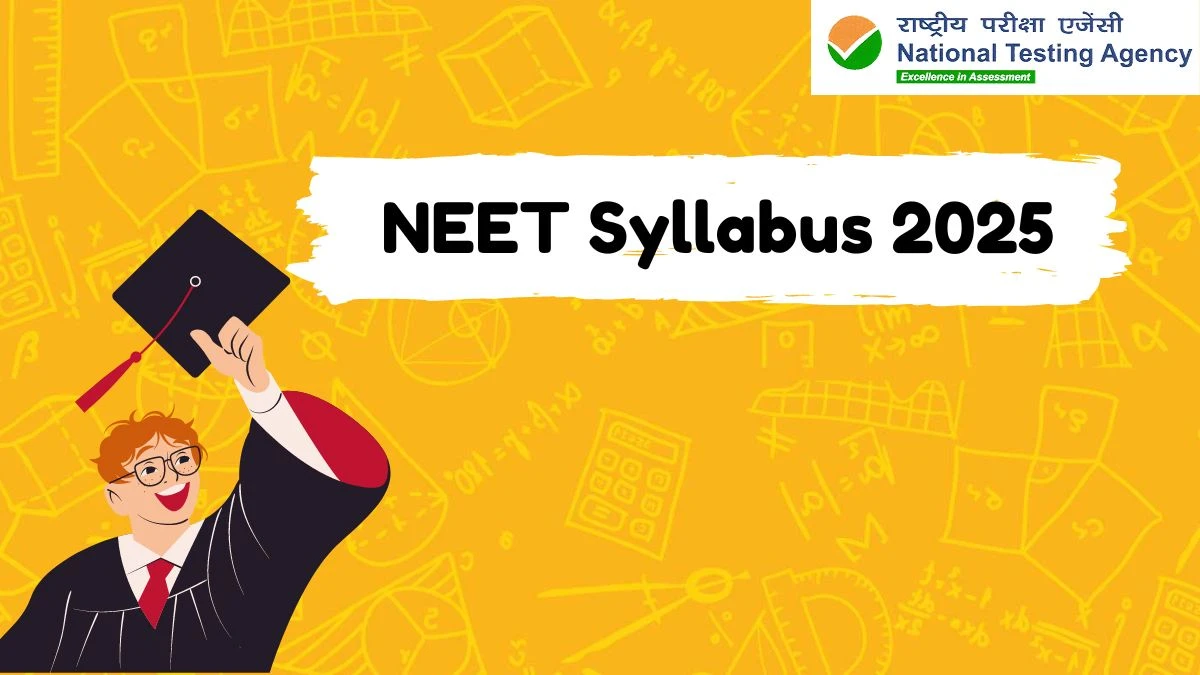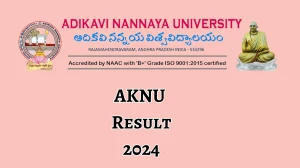- Rojgarlive »
- Education »
- NEET Syllabus 2025 at neet.nta.nic.in Syllabus PDF Details Here
NEET Syllabus 2025 at neet.nta.nic.in Syllabus PDF Details Here
by Keerthika
Updated Jul 29, 2024

NEET Syllabus 2025 at neet.nta.nic.in
The NTA will release the NEET 2025 syllabus in the information bulletin available on neet.ntaonline.in. The NEET 2025 syllabus will cover three subjects: Physics, Chemistry, and Biology. The Biology syllabus is further divided into Botany and Zoology. The NEET syllabus is designed to align with the Class 11 and 12 curricula of state boards, CBSE, ICSE, NIOS, and COBSE. For more details on the NEET UG 2025 syllabus, including subject-wise important topics and recommended books, read the full article here.
Check - NEET Syllabus 2025
Unit VI- Gravitation
Motion of a satellite, time and energy of a satellite
Unit VII- Properties of Solids and Liquids
Pressure due to a fluid column; Pascal's law and its applications. Effect of gravity on fluid pressure
Unit IX- Kinetics Theory of Gases
RMS speed of gas molecules, Avogadro's number
Unit XIII- Magnetic effects of current and magnetism
Effect of Temperature on Magnetic Properties
Unit XVII- Dual Nature of Matter and Radiation
Dual nature of radiation
Unit- XX Experimental Skills
- Familiarity with the basic approach and observations of the experiments and activities: Vernier callipers-its use to measure the internal and external diameter and depth of a vessel,
- Screw gauge-its use to determine the thickness diameter of thin sheet/wire,
- Simple pendulum-dissipation of energy by plotting a graph between the square of amplitude and time,
- Metre Scale - the mass of a given object by the principle of moments, Young's modulus of elasticity of the material of a metallic wire,
- The surface tension of water by capillary rise and effect of detergents, Co-efficient of Viscosity of a given viscous liquid by measuring terminal velocity of a given spherical body
- Speed of sound in air at room temperature using a resonance tube, Specific heat capacity of a given (i) solid and (ii) liquid by method of mixtures.
- The resistivity of the material of a given wire using a metre bridge, The resistance of a given wire using Ohm's law, Resistance and figure of merit of a galvanometer by half deflection method
- The focal length of (i) Convex mirror (ii) Concave mirror, and (iii) Convex lens, using the parallax method,
- The plot of the angle of deviation vs angle of incidence for a triangular prism,
- The refractive index of a glass slab using a travelling microscope,
- Characteristic curves of a p-n junction diode in forward and reverse bias,
- Characteristic curves of a Zener diode and finding reverse breakdown voltage and Identification of Diode. LED, Resistor. A capacitor from a mixed collection of such item.
List of added topics in NEET syllabus 2025 NTA for Chemistry
Unit II- Atomic Structure
Nature of electromagnetic radiation, photoelectric effect; Spectrum of the hydrogen atom. Bohr model of a hydrogen atom - its postulates, derivation of the relations for the energy of the electron and radii of the different orbits, limitations of Bohr's model
Unit III- Chemical Bonding and Molecular Structure
Kossel - Lewis approach to chemical bond formation, the concept of ionic and covalent bonds, Elementary idea of metallic bonding, Fajan's rule
Unit IV- Chemical Thermodynamics
Fundamentals of thermodynamics: System and surroundings, extensive and intensive properties' state functions, types of processes
Unit VII- Redox Reactions and Electrochemistry
Electrolytic and metallic conduction, conductance and their in electrolytic solutions, molar conductivities variation with concentration: Kohlrausch's law and its applications, Electrochemical cells: Electrolytic and Galvanic cells, different types of electrodes, electrode potentials including standard electrode potential, half-cell and cell reactions, emf of a Galvanic Cell and its measurement: Nernst equation and its applications, Relationship between cell potential and Gibbs' energy change: Dry cell and lead accumulator, Fuel cells
Unit VIII- Chemical Kinetics
Pressure, collision theory of bimolecular gaseous reactions (no derivation)
Unit XI- d and f Block Elements
Transition Elements
Unit XIII- Purification and Characterization of Organic Compounds
Purification: Crystallisation. sublimation, distillation, differential extraction, chromatography - principles and their applications. Qualitative analysis: Detection of nitrogen, sulphur, phosphorus and halogens. Quantitative analysis (basic principles only): Estimation of carbon. hydrogen. nitrogen. halogens. sulphur. phosphorus. Calculations of empirical formula and molecular formulae: Numerical problems in organic quantitative analysis
Unit XV- Hydrocarbons
Classification of isomerism. IUPAC nomenclature, general methods of preparation, properties, and reactions
Unit XVI- Organic Compounds Containing Halogens
General methods of preparation, properties, and reactions; Nature of C-X bond: Mechanisms of substitution reactions. Uses; Environmental effects of chloroform, iodoform freons, and DDT
Unit XX- Principles Related to Practical Chemistry
Detection of extra elements (Nitrogen, sulphur, halogens), in organic compounds; Detection of the following functional group, hydroxyl (alcoholic and phenolic), carbonyl (aldehyde and ketones) carboxyl, and amino groups in organic compounds. The chemistry involved in the preparation of the following: Inorganic compounds: Mohr's salt. potash alum. Organic compounds: Acetanilide. p-nitro acetanilide, aniline yellow, iodoform. The chemistry involved in the titrimetric exercises - Acids. bases and the use of indicators. oxalic-acid vs KMnO4. Mohr's salt vs KMnO4, Chemical principles involved in the qualitative salt analysis, Cations, Anions, Chemical principles involved in the following experiments: (I) Enthalpy of solution of CuSO (II) Enthalpy of neutralisation of strong acid and strong base (III) Preparation of lyophilic and lyophobic sols (IV) Kinetic study of the reaction of iodide ions with hydrogen peroxide at room temperature.
List of added topics in NEET syllabus 2025 NTA for Biology
Unit II- Structural Organization in Animals and Plants
Family (malvaceae, Cruciferae, leguminoceae, compositae, graminae). Morphology, anatomy and functions of different systems (digestive, circulatory, respiratory, nervous and reproductive) of an insect (frog). (Brief account only).
Unit III- Cell Structure and Function
Classification and nomenclature of enzymes
Unit VII- Genetics and Evolution
Protein biosynthesis
Unit VIII- Biology and Human Welfare
Dengue, Chikungunya
NEET Syllabus 2025? -FAQ
The NEET 2025 syllabus includes three subjects: Physics, Chemistry, and Biology.
The NEET 2025 syllabus will be released in the information bulletin available on the official NTA NEET website at neet.ntaonline.in.




